Spotlight on Belmont
-
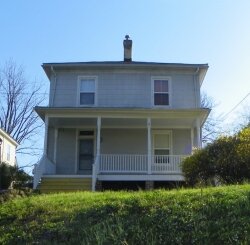 330 Monticello Road - 3 BR, 1 full & 1 half-bath, 1506 sq. ft., .15 acres, asking price: $359,000, assessment: $357,800, Bob Hughes, Nest Realty Group, 434-989-3592Samantha Masone
330 Monticello Road - 3 BR, 1 full & 1 half-bath, 1506 sq. ft., .15 acres, asking price: $359,000, assessment: $357,800, Bob Hughes, Nest Realty Group, 434-989-3592Samantha Masone -
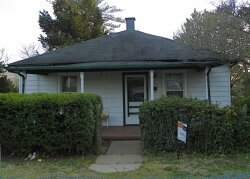 1100 Altavista Avenue - 2 BR, 1 bathroom, 1283 sq. ft., .27 acres, asking price: $249,000, assessment: $192,600, David Sloan, Sloan Manis Real Estate Partners, 434-220-5656Samantha Masone
1100 Altavista Avenue - 2 BR, 1 bathroom, 1283 sq. ft., .27 acres, asking price: $249,000, assessment: $192,600, David Sloan, Sloan Manis Real Estate Partners, 434-220-5656Samantha Masone -
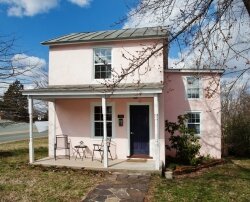 702 Sonoma Street - 3 BR, 2 baths, 1334 sq. ft., .13 acres, asking price: $238,500, assessment: $230,800, Mary Hunter (owner), 434-825-0481Scott Smith
702 Sonoma Street - 3 BR, 2 baths, 1334 sq. ft., .13 acres, asking price: $238,500, assessment: $230,800, Mary Hunter (owner), 434-825-0481Scott Smith -
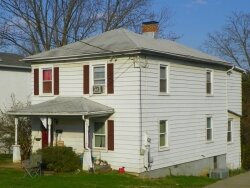 152 Carlton Road - 3 BR, 2 bathrooms, 2479 sq. ft., .22 acres, asking price: $199,000, assessment: $155,300, Aaron Manis, Sloan Manis Real Estate Partners, 434-962-7039Samantha Masone
152 Carlton Road - 3 BR, 2 bathrooms, 2479 sq. ft., .22 acres, asking price: $199,000, assessment: $155,300, Aaron Manis, Sloan Manis Real Estate Partners, 434-962-7039Samantha Masone -
 802 Nassau Street - 3 BR, 2 bathrooms, 1045 sq. ft., .31 acres, asking price: $175,000, assessment: $125,800, William B. Walton, III, Real Property, Inc., 434-202-1851Samantha Masone
802 Nassau Street - 3 BR, 2 bathrooms, 1045 sq. ft., .31 acres, asking price: $175,000, assessment: $125,800, William B. Walton, III, Real Property, Inc., 434-202-1851Samantha Masone -
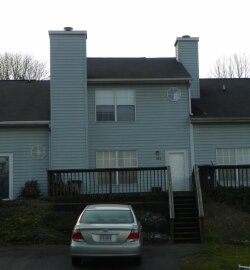 963 Rives Street - 3 BR, 1 full & 1 half-bath, 1120 sq. ft. , .09 acres, asking price: $155,000, assessment: $152,100, Marjorie Adam, Nest Realty Group, 434-882-0983Samantha Masone
963 Rives Street - 3 BR, 1 full & 1 half-bath, 1120 sq. ft. , .09 acres, asking price: $155,000, assessment: $152,100, Marjorie Adam, Nest Realty Group, 434-882-0983Samantha Masone -
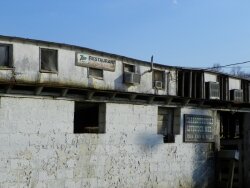 The livestock market on Franklin StreetSamantha Masone
The livestock market on Franklin StreetSamantha Masone -
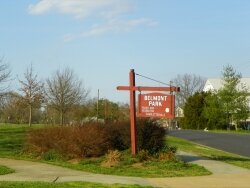 Samantha Masone
Samantha Masone -
 Samantha Masone
Samantha Masone -
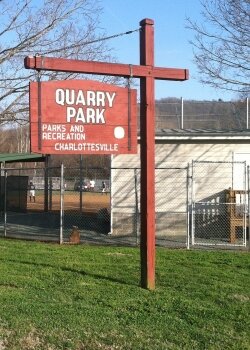 Samantha Masone
Samantha Masone -
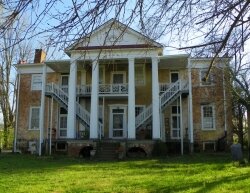 The former Belle-Mont mansion that sits at 759 Belmont Street, as seen from the Hinton Avenue Methodist Church parking lot.Samantha Masone
The former Belle-Mont mansion that sits at 759 Belmont Street, as seen from the Hinton Avenue Methodist Church parking lot.Samantha Masone
Area: Belmont
Price range: $155,000-$415,000
Schools: Clark, Walker & Buford, Charlottesville
Pros: affordability, proximity to amenities, sense of community
Cons: number of rentals, varying degrees of upkeep
Today, the Belmont neighborhood is well known for its cluster of upscale restaurants– including Tavola, The Local, and tapas bar MAS, as well as the hip coffee shop La Taza– and as well for the soon-to-be-redesigned bridge, but this gentrification is recent in a neighborhood steeped in history.
According to Charlottesville and the University of Virginia, A Pictorial History, in approximately 1730 John Harvie became the owner of a 2,500-acre estate that eventually gave rise to today’s Belmont neighborhood, located southeast of the Downtown Mall. The property traded hands several times and diminished in size until it became a 551-acre estate known as Belle-mont and was purchased at auction in 1847 by Slaughter W. Ficklin, who is also credited with importing the first Percheron Norman horses to Charlottesville from France.
In the late 1800s, the Ficklin family sold the property to the Belmont Land Company, and in 1891 surveyors divided the area into a grid pattern and delineated the street layout prior to selling lots. This subdivision plan was reportedly the first of its type in the country.
James H. Buck Jr.’s historical account indicates that Belmont was a lively area during the early 1900’s, with a carousel, a carnival, a circus lot located near the railroad tracks, and even an annual gypsy camp. Nonetheless, the early residents of Belmont were middle and upper class people seeking a respite from city life, and Belmont Avenue became a central location for a number of successful residents, businessmen and merchants.
By contrast, the extreme southeastern portion of the Belmont area, which became home to the Albemarle Livestock Market in 1941 and was populated by a number of small pig farms, was disparaged by the elite and given the nickname “Hogwaller.”
In the mid-1900s, the character of Belmont began to change as many of its prominent residents relocated, the number of rental units began to rise, and landlords allowed their properties to fall into disrepair. The deterioration of the neighborhood continued until 1980 when the Belmont Neighborhood Association was formed. Since then, Belmont has been revitalized and is known in some circles as a Renaissance area.
Modern-day Belmont retains much of the edgy, colorful vibe that it enjoyed at its inception. It is still home to the livestock market, although Fridays After Five has taken the place of the carnival.
Real estate activity in Belmont is fairly lively with multiple listings being introduced and numerous sales taking place each year. Bob Hughes, a realtor with Nest Realty Group, says Belmont still offers perks not found in other city neighborhoods.
“The beauty of buying in Belmont is that you can find an older home on a decent-sized lot that’s relatively affordable and close to the downtown mall,” he says, noting that "there’s also a strong sense of community.”
Mary Hunter, a long-time Belmont resident, agrees.
“For me, Belmont is perfect. There’s lots of variety, architecturally as well as socially, and neighbors quickly become friends. I’ve been able to walk nearly everywhere: Downtown, Belmont restaurants, my doctor’s office, ACAC,” says Hunter, who plans to downsize elsewhere in Belmont once she sells her distinctive pink house on Sonoma Street. That sense of community helped contribute to Hunter’s decision to offer her home as a FSBO (for sale by owner).
“I’m selling ‘by owner’ in part so that I can negotiate for the best new neighbors for my friends who live next door,” she says.
Not all sellers extend such considerations, however, as many Belmont properties are tenant- rather than owner-occupied. The combined effect of absentee ownership and heavy rental traffic is often noticeable and not particularly positive, as Bob Hughes observes.
“The general feeling and the level of upkeep vary from block to block, and so does the wisdom of investing, depending on the location and the time you buy,” he cautions.
2 comments
Belmont didn;t go through any real sort of decline until Vinegar Hill was mowed down and the projects put in.
Belmont...the once and eternal "renaissance area". Heh...I thought it was "bohemian" or was that just pre-bubble.
No way this house goes for that pricetag - not on that busy street, and not for a 1500sqft. house with asbestos shingles.
Much of Belmont was nice, modest working class or blue collar housing stock and that's just great, but let's not make it into a gentrification revival zone. Sure, it's walkable to the downtown mall...and that's about it.